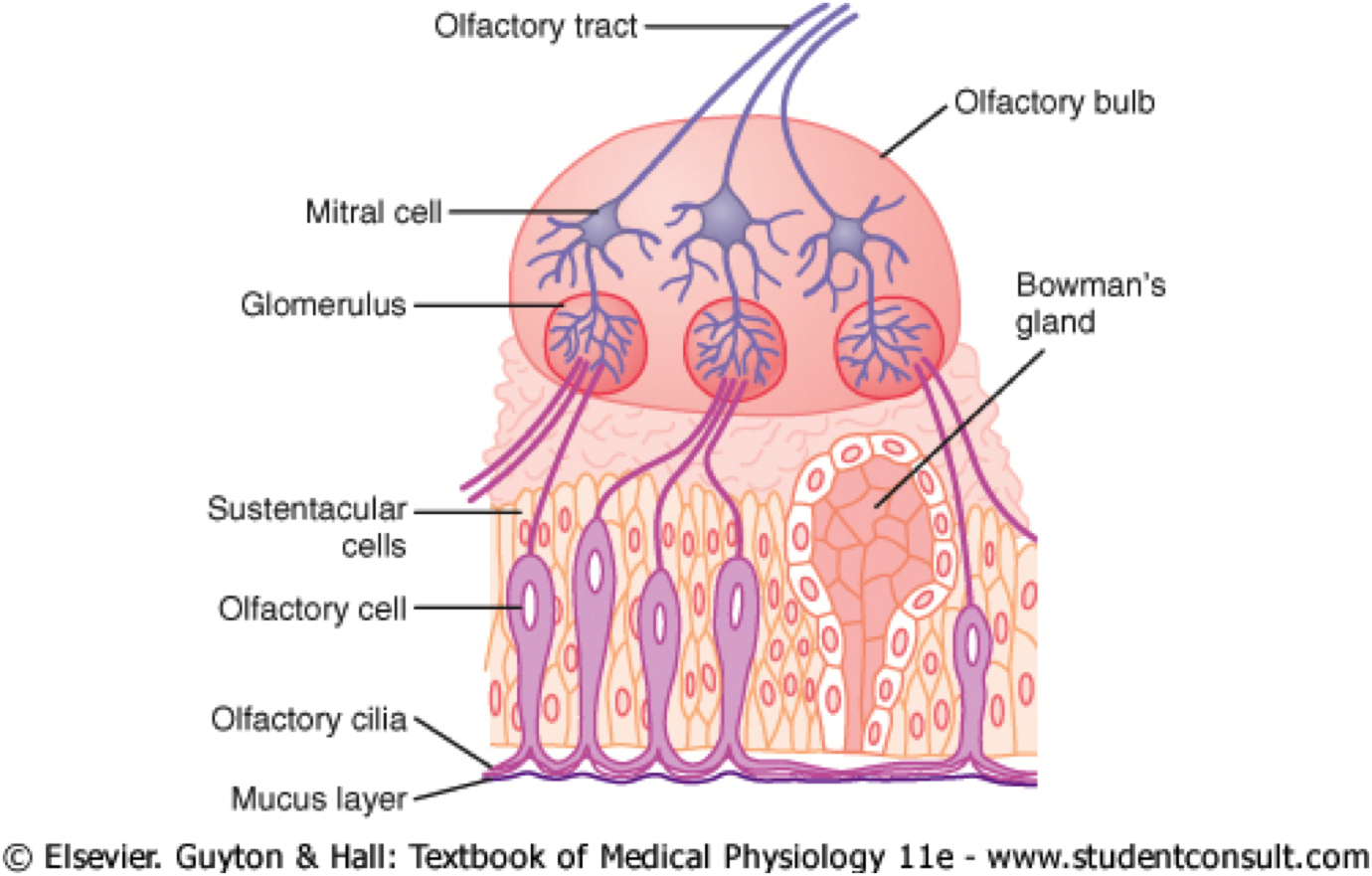A. Definitions and Structural components required:
1. The olfactory (= smell) membrane or epithelium is located in the superior part of the nose (= nostril). |

|
|
2. The area covered is about 2-3 cm2 in each nose and contains millions of sensors.
|
||
3. The sensors are actually nerve cells! They have a bipolar shape. |
||
4. At one end, there are numerous olfactory hairs = cilia) sticking out into the mucus of the nose. |
||
5. At the other end of the olfactory cells, non-myelenated axons run through openings of the cribriform plate into the overlying olfactory bulb. |
 |
|
6. Essentially, these axons run through the base of the skull into the brain! |
||
7. As in the taste buds, the olfactory cells are supported, surrounded and cushioned by sustentacular cells |
8. And, as in the taste buds, there are also basal cells, which are really stem cells to make new olfactory cells. |
9. This is probably the only known situation in which nerve cells (as the olfactory cells really are) are renewed. All other nerve cells cannot do so. |
10. Olfactory cells live about 60 days. |
11. We should also mention that in the olfactory epithelium there are also olfactory glands, which makes the mucus. |
12. This mucus is very important because it ‘catches’ and contains the chemicals from the air that will stimulate the cilia of the olfactory cells. |
